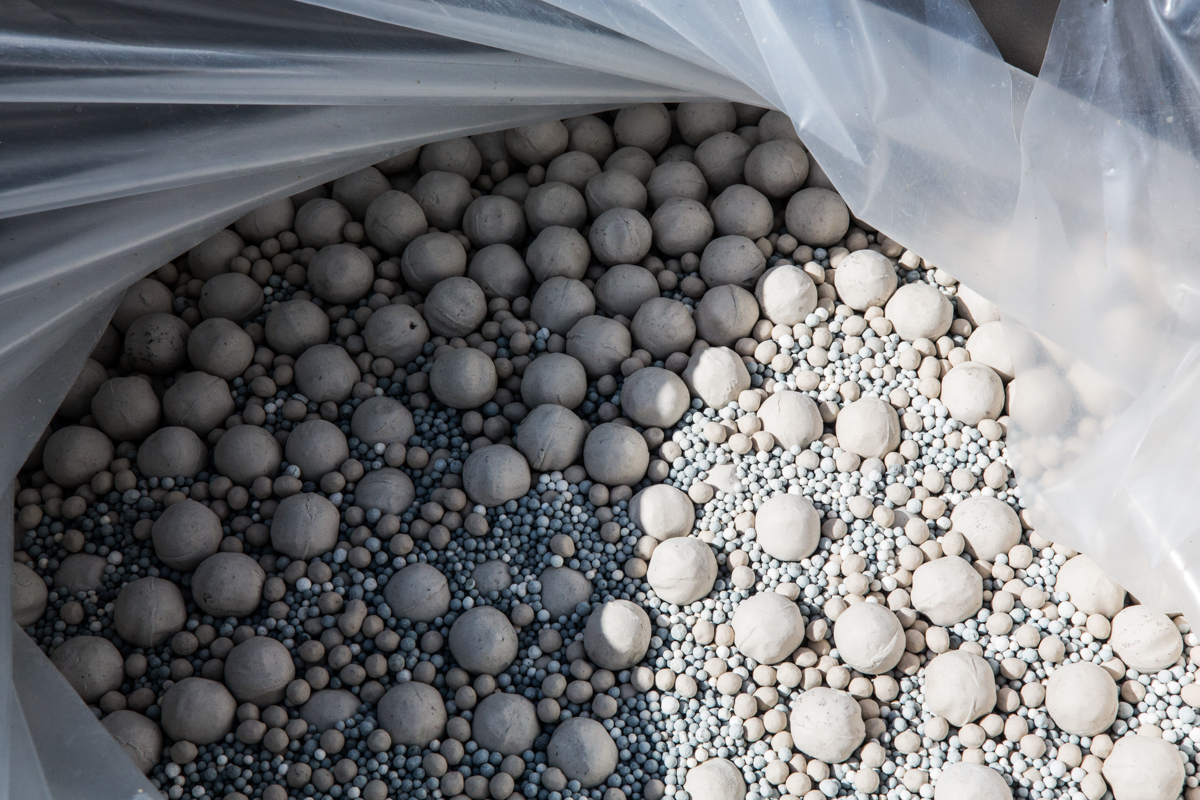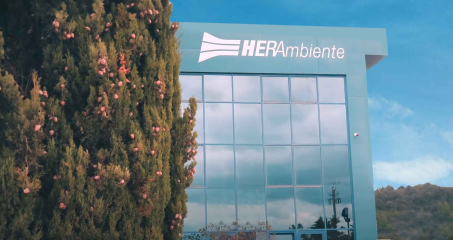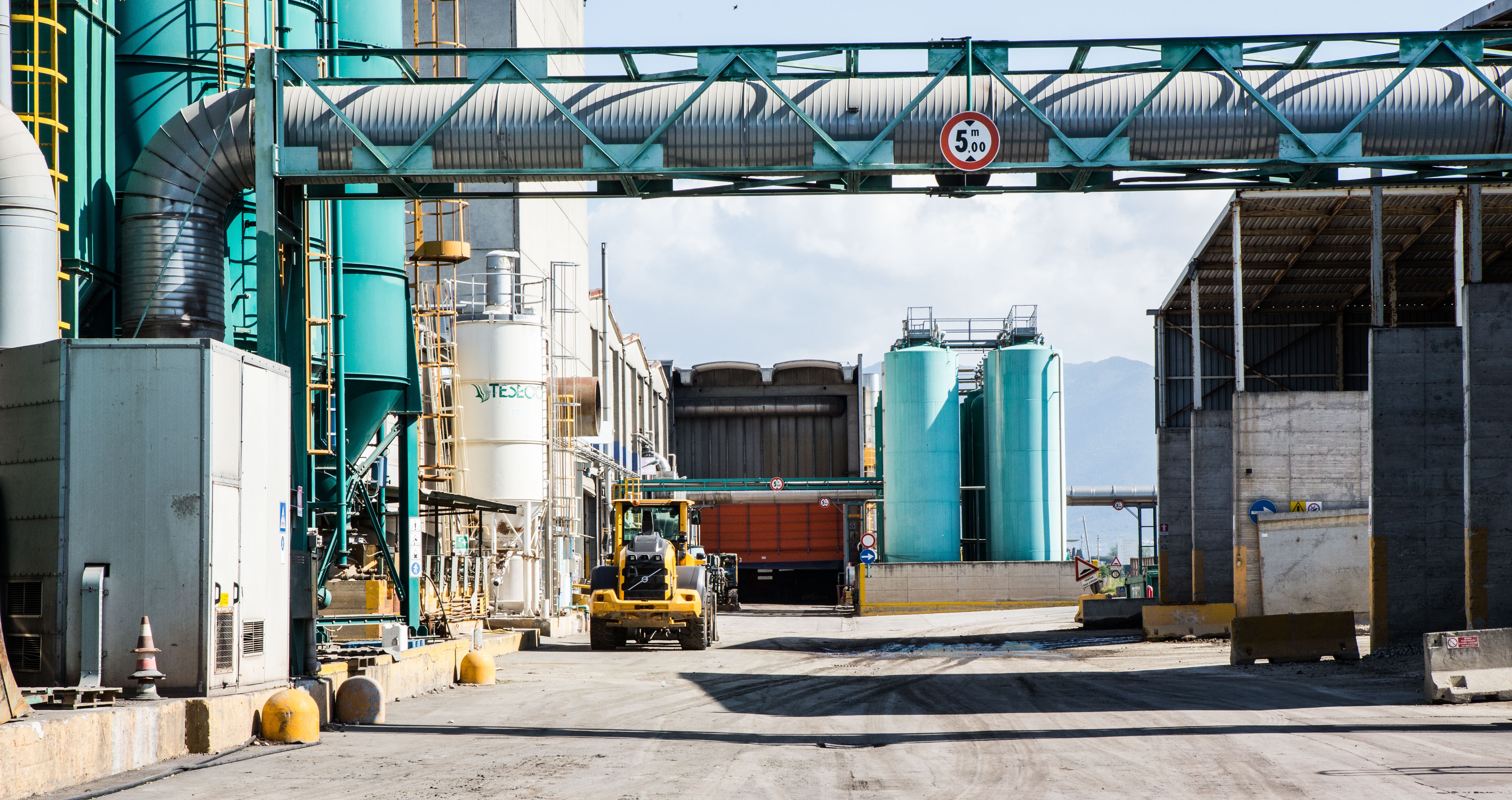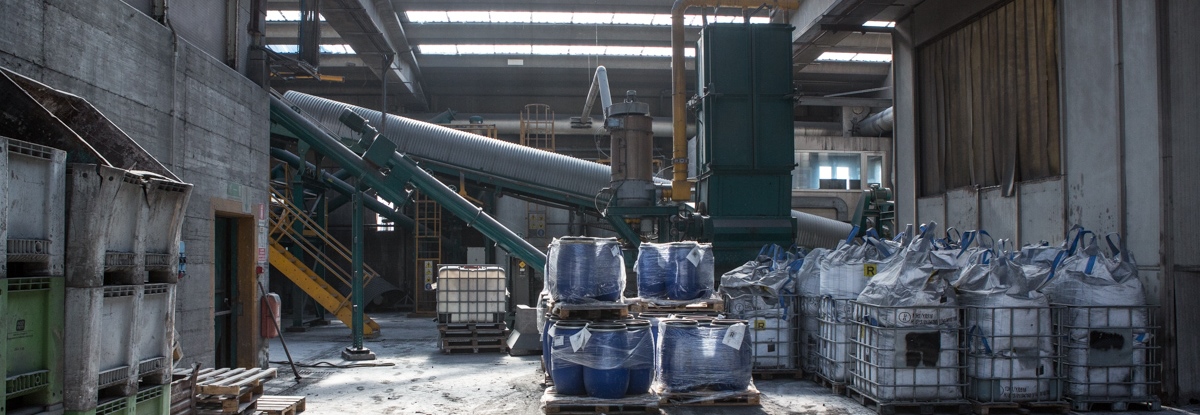Overview
Special hazardous and non hazardous waste is processed in the Pisa waste inerting plant with a capacity of 25 t/h and an authorised treatment capacity of 165,000 tonnes per year.
Inerting is the process of adapting the physicochemical characteristics of certain types of waste to the specifications and acceptance limits for disposal in landfills, underground mines and/or external treatment plants. In particular, by mixing the waste with specific reagents (sodium sulphide, lime, etc.) and/or hydraulic binders (lime, cement and silicates, bentonite, etc.) it is possible to trap pollutants and bring the release of certain contaminants contained in the waste within legal limits. The same purpose can be achieved by mixing waste with different characteristics in order to help the reaction between the compounds found in the various matrices. The process also makes it possible to modify the mechanical characteristics of the waste, improve them and guarantee the required performance of the plant.
Page update 5 December 2022
- 1. Waste storage section /li>
- 2. Reagent storage section
- 3. Inerting section
- 4. Bay Section
- 5. Gaseous emissions abatement section (areas serving the process)
The main treatment sections and related equipment are listed below.
- 2 silos for dust to be treated: 60 m3/each;
- Bay for solid waste to be treated: 600 t;
- Bay for solid waste to be treated and/or treated with diversified destination/processing (inerting, soil washing, storage or external plants): 5,000 t
The waste that is treated in the inerting plant comes from various industrial production processes, and generally consists of sludge from paint production processes, sludge from effluent treatment, grinding sludge, oil sludge, contaminated soil from environmental remediation and redevelopment operations, spent catalysts, sludge from chemical, physical and biological treatment, fly-ash from abatement of combustion fumes and/or polluting effluents, waste from incineration furnaces and thermoelectric power plants, etc. The plant can also be used for waste for which there is no need to reduce the release of pollutants, but only to alter its mechanical and physical properties, which may lead to changes in its physical state. Examples include: solidification of an aqueous sludge with the addition of a dry sludge; solidification of an aqueous sludge with the addition of dust; solidification of an aqueous sludge with the addition of a small amount of lime, cement or bentonite.
- 1. waste inlet;
- 2. preliminary homogenisation;
- 3. screening, deferrisation, conveyor belt and dust inlet;
- 4. mechanical mixing;
- 5. maturation;
- 6. storage of reagents (lime, cement, etc.).
The materials to be treated are analysed in advance in the laboratory inside the plant to establish the most suitable type of treatment. The waste (sludge, soil and dust) entering the inerting plant is fed into the appropriate discharge tank and then into the adjacent homogenisation tank where it is homogenised and given the necessary physical consistency for being fed into the plant.
At this stage, water and/or liquid and/or muddy waste and/or other reagents (silicate, bentonite, phosphoric acid, sodium sulphide or organic thickeners) can be added, if necessary, in order to achieve the desired degree of moisture and improve the process.
From the homogenisation tank, or in the case of suitable sludge, directly from the discharge tank or nearby temporary storage areas, the sludge is taken and transferred into the loading hopper of the conveyor belt that feeds the vibrating screen, where the reagents and dust to be treated are fed into the external silos and enable the homogenisation and transport of the material contained in them. After being mixed with reagents, the sludge is discharged into the body of a lorry via a conveyor belt and then transferred to the maturation area. The waste remains in this area for 24 to 36 hours, pending analytical check of the treatment results, and is then transferred to temporary storage bays for subsequent disposal in landfills, underground mines and/or other authorised treatment plants.
The room of the inerting plant and the storage/working bays have suction systems for air exchange. The sucked air is conveyed to abatement plants before being released into the atmosphere.
Authorisations

Chosen for you
You may also be interested in...




